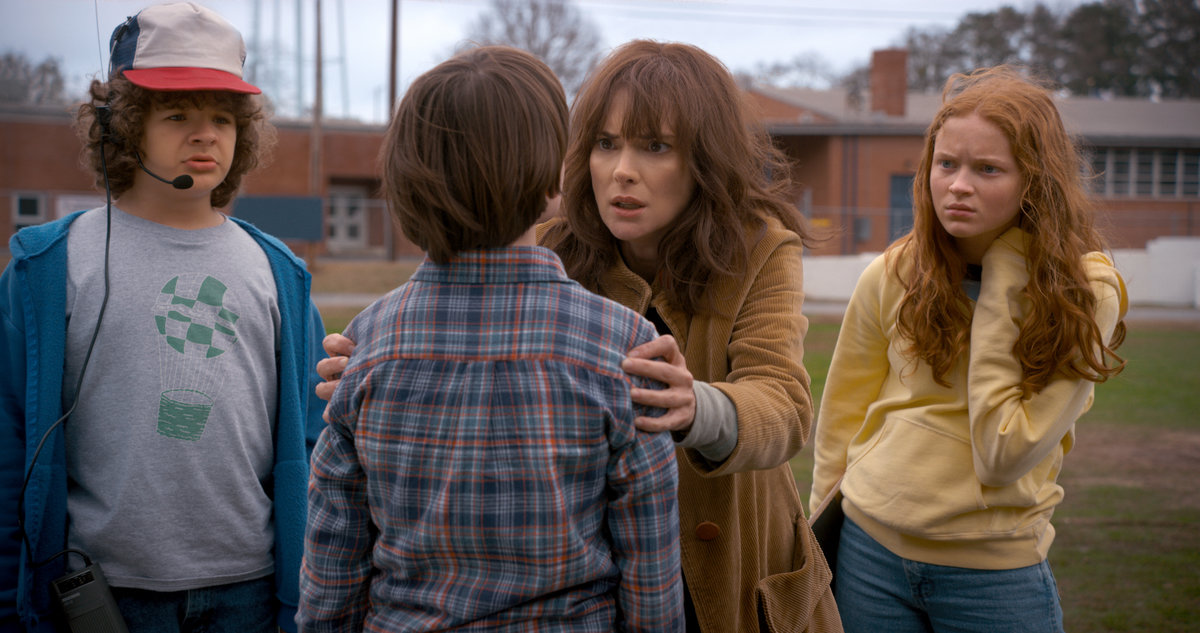

While the first season of the Netflix original series Stranger Things can be recommended to anyone with a stomach for suspense and horror, the recently released third season will probably sit well with none but the most voracious genre addicts.
Appealing perhaps primarily to what might be called “old millennials” – that sub-generation with personal memories of growing up in the 1980s – one of the best aspects of Stranger Things is its all but mythic, borderline ridiculous celebration of that decade’s American pop culture.
Delighting as much in fast food, hairspray, and spandex as in the era’s fringier, underground obsessions like comic books and conspiracy theories, it is as easy to laugh at the series’ exaggerations as it is to get caught up in its enthusiasm. By the third trip around memory lane, however, the nostalgia has started to lose its novelty.
For those just tuning in, the series follows a group of elementary school youngsters in Hawkins, Indiana, whose preferred past times include period-appropriate geeky mainstays like dressing up as Ghostbusters and playing Dungeons and Dragons.
When their backwoods small town becomes infiltrated by real life monsters from another dimension, these social outcasts find themselves curiously equipped to answer the call to action. With the help of a mysterious, numerically named girl with telepathic powers called Eleven, or simply El, who turns out to be an escapee from a secret government human experiment, the kiddos set about solving the mystery, saving the town, and, yes, probably even the world.
This might all sound rather dorky-twee, and it is. But somehow, almost magically, it also amalgamates into something extremely absorbing and just plain fun.
Part of the panache of the series is the unabashed, light-sabre-crackling quality of its geekiness. For every inner-adolescent who has ever pretended not to know the names of all the Godzilla monsters or deliberately failed to mention a fantasy novel read on the sly, Stranger Things steps out like a champion for an unapologetically reject-centred concept of cool.
Perhaps the most arresting thing about the series, though, is the calibre of its child acting. The performances, in a word, are astonishing and as good as anything happening on the screen. Witnessing this alone makes the series worth a watch. At least at the beginning.
What the series does well – revival, enthusiasm, youth – it does remarkably well, but as the seasons roll by, the joie de vivre begins to seep away and even sour into something like irrelevance.
A certain effervescence of energy and absence of serious intention we can readily countenance in children. But as persons advance towards adulthood, many people begin naturally and rightly, I think, to expect something a little more considered and substantive.
And it is in attempting this awkward transition that the series starts to lose its footing.
By Season 3, the heroes are clearly no longer chubby-cheeked and forgivably free-spirited children, but awkward-limbed and angsty adolescents. The boardgames are exchanged for boy- and girl-friends, the make-believe for making out. The badinage hardens into bickering, expressing something more bitter and heartfelt.
In taking itself more seriously, it seems, the series sacrifices its essence.
If it intrigues you, do watch Stranger Things. Just be advised that the fun, like the series itself and the childhood it celebrates, will not last forever.
(Originally published in The B.C. Catholic)
